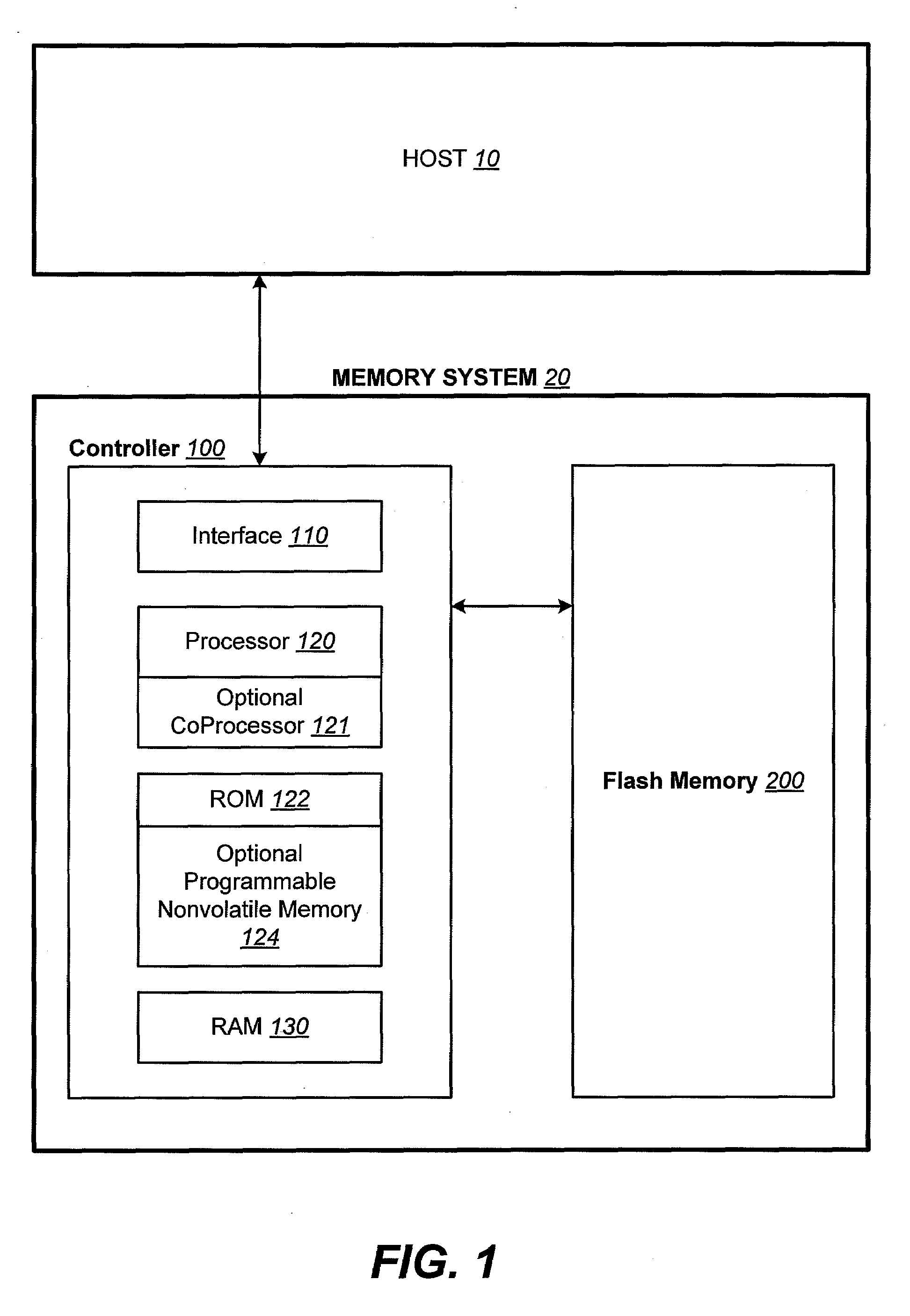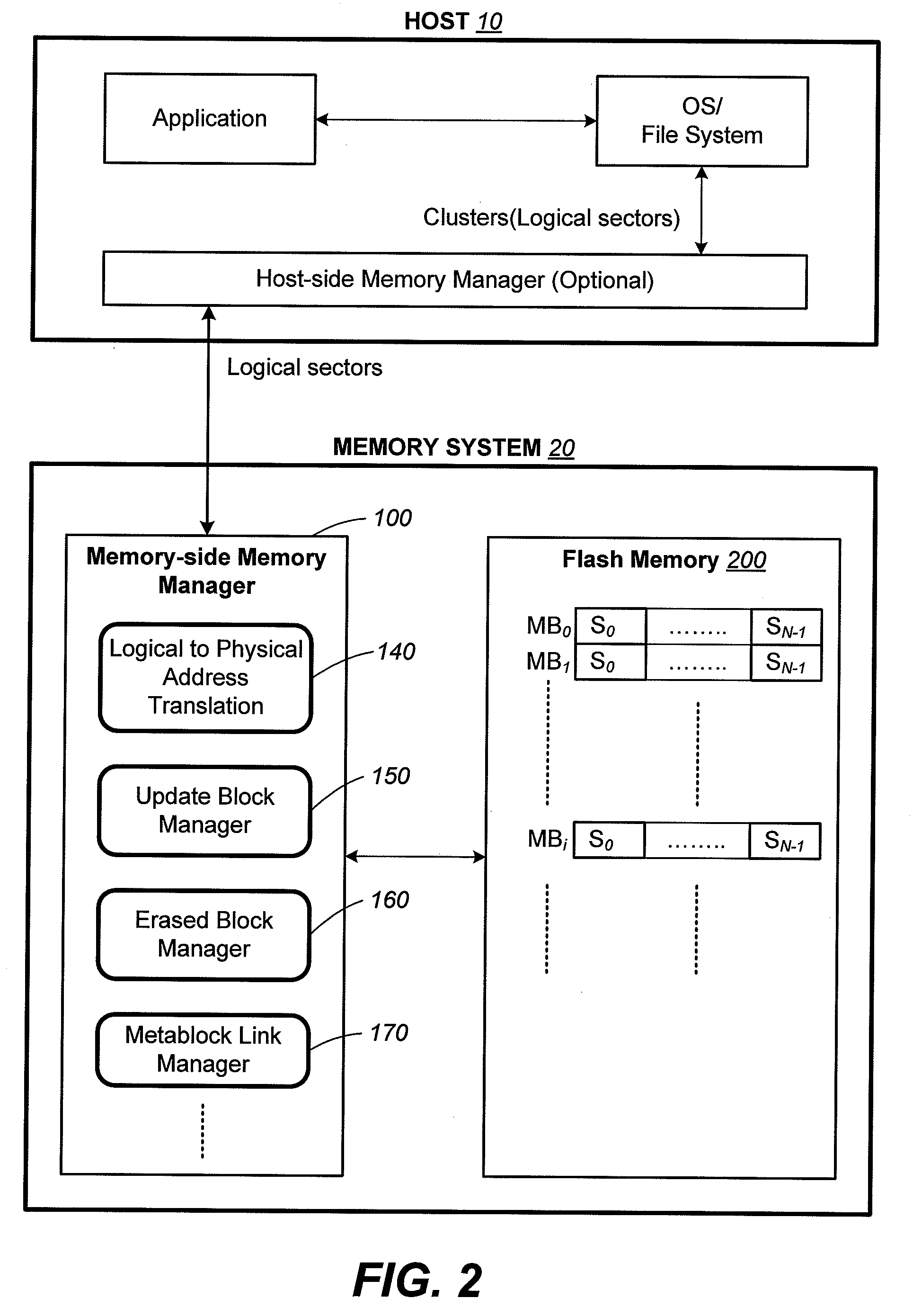Non-volatile memory with worst-case control data management
a technology of control data and non-volatile memory, applied in the field of non-volatile semiconductor memory, can solve the problems of prone to mechanical failure, unsuitable mobile and handheld environment, and bulky disk drives
- Summary
- Abstract
- Description
- Claims
- Application Information
AI Technical Summary
Benefits of technology
Problems solved by technology
Method used
Image
Examples
Embodiment Construction
[0087]FIG. 1 to FIG. 20 illustrate examples of memory systems with block management in which the various aspects of the present invention may be implemented. Similar memory systems have been disclosed in the following U.S. Patent Application Publications. U.S. Patent Application Publications No. US-2005-0144365-A1, entitled “Non-Volatile Memory and Method with Control Data Management,” by Gorobets et al. U.S. Application Publication No. US-2006-0155922-A1 published Jul. 13, 2006, entitled “Non-Volatile Memory And Method With Improved Indexing For Scratch Pad And Update Blocks”, by Gorobets et al.
[0088]FIG. 1 illustrates schematically the main hardware components of a memory system suitable for implementing the present invention. The memory system 20 typically operates with a host 10 through a host interface. The memory system is typically in the form of a memory card or an embedded memory system. The memory system 20 includes a memory 200 whose operations are controlled by a control...
PUM
 Login to View More
Login to View More Abstract
Description
Claims
Application Information
 Login to View More
Login to View More - R&D
- Intellectual Property
- Life Sciences
- Materials
- Tech Scout
- Unparalleled Data Quality
- Higher Quality Content
- 60% Fewer Hallucinations
Browse by: Latest US Patents, China's latest patents, Technical Efficacy Thesaurus, Application Domain, Technology Topic, Popular Technical Reports.
© 2025 PatSnap. All rights reserved.Legal|Privacy policy|Modern Slavery Act Transparency Statement|Sitemap|About US| Contact US: help@patsnap.com



